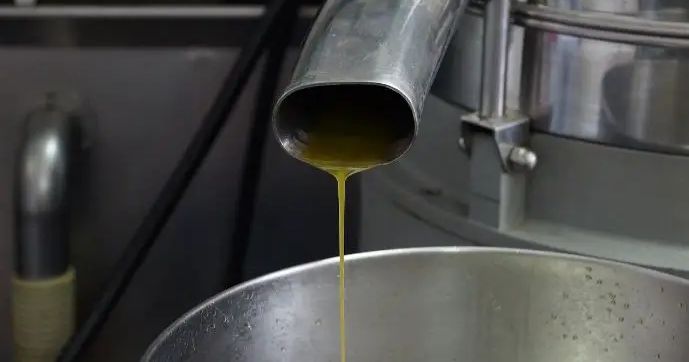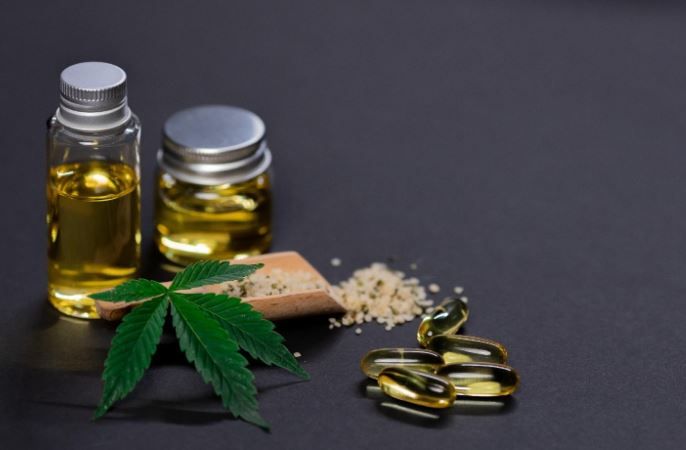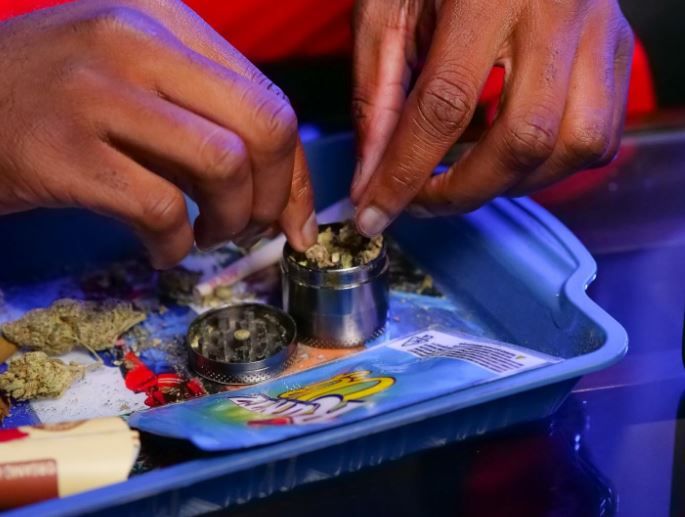
Pop Culture | Life | Shared | Cool Stuff
The Process of Making CBD Concentrates – A Detailed Look

Cannabis extracts are growing in popularity, yet they are a product of a complicated, extensive process that is constantly evolving. Currently, there are many types of marijuana extracts and concentrates, and the methods of extraction and manufacturing keep coming up and improving as time goes by. Whether you’re consuming weed products for recreational or medicinal reasons, it’s vital to understand what the products you’re ingesting are made of. This way, you can take proper precautions and enjoy CBD benefits safely.
This article discusses CBD concentrates in depth with a keen look at their production process. You can also find some high-quality CBD concentrates and learn more about them at https://askgrowers.com/cbd/cbd-concentrates.
What Are CBD Concentrates?
Concentrates are cannabis-derived products that contain high amounts of cannabidiol (CBD) to allow consumers to get a higher dose of this compound in a relatively short period. CBD is the non-intoxicating, non-addictive element of cannabis, primarily found in the hemp variety and genetically engineered cultivars.
Although concentrates may have more advantages over traditional CBD products, they are not for everyone since some people are more sensitive to other compounds in the concentrates. Additionally, users are advised to try the concentrates in lower doses since they are still being keenly studied and are not yet FDA-approved or regulated. However, most people often confuse CBD concentrates with cannabis extracts, even though they are two different substances. Here is what differentiates the two products.
What Is the Difference Between Cannabis Extracts and Concentrates?
Concentrate is a broad term for all products derived from the cannabis plant. Although the terms ‘extract’ and ‘concentrate’ are sometimes used interchangeably, some describe extracts as products generated using solvents. Concentrates, in their turn, are extracted from plants using non-solvent methods.
Cannabinoids are extracted and concentrated from hemp using solvent (or chemical) extraction and mechanical or solventless extraction. Solvent extraction uses volatile solvents to dissolve the hair-like structures (trichomes) from the plant’s tissue. The chemical agent is removed, leaving behind an extract similar to shatter, wax, or vape oil. These are known as extracts. Chemicals are not used in solventless or mechanical extraction procedures. Instead, the plant’s trichomes are pounded, manipulated, or pressed, yielding a concentrate such as kief, hash, or rosin. These are known as concentrations.
Both of these extraction techniques have benefits and drawbacks. One advantage of solvent-based extraction is that it may be tailored to separate specific cannabinoids. These can be used to achieve particular effects, such as increased euphoric energy or calm and overall relaxation. However, some people prefer to manufacture concentrates using solventless extraction procedures because they believe they are more natural.
Solventless methods also preserve more original cannabinoids, which are not changed by the chemicals used during solvent-based techniques. This trait of the method has increased interest in solventless extraction technologies like commercial rosin presses.

Chemical Extraction Methods
Several types of solvents can be used to extract cannabis concentrates. We will focus on three major ones: hydrocarbons, alcohol, and carbon dioxide.
Hydrocarbon Extraction
First, this procedure is hazardous and poses severe risks of burns or industrial accidents. This procedure is strictly for the commercial production of concentrates and should not be attempted at home. Hydrocarbon-extracted cannabis products should be created using open-loop or closed-loop manufacturing equipment.
Even expert extractors should avoid open-loop hydrocarbon extraction systems. They are cheap to buy, yet they have led to numerous deaths resulting from explosions. Besides, producing butane hash oil (BHO) or other concentrations containing volatile solvents such as butane, propane, hexane, or any other hydrocarbon in an unapproved area without a license is a serious offense in most jurisdictions. Penalties typically range from five- to six-figure sums to months or years in jail.
Alcohol-Based Extraction
Alcohol is used as an extraction solvent to create super-concentrated Rick Simpson Oil. In most regions, producing cannabis extracts with alcohol is prohibited. For starters, regular-strength alcohol does not extract the trichomes at all. This technique necessitates using 151-proof alcohol, which is banned in most jurisdictions.
Second, employing 151-proof alcohol for extraction poses a significant fire hazard. Making matters worse, some people attempt to use this tactic indoors, which poses an explosion risk and the potential for respiratory damage from fumes. In summary, this technology is risky for home extraction and should not be used without a safe industrial setup.
Supercritical Carbon Dioxide Extraction
Carbon dioxide is used to create extracts and concentrates. When used to produce extracts, it is called supercritical CO2 extraction. This technique uses CO2 as a solvent to separate the various components from one another. Because of the tremendous pressure and temperature, carbon dioxide alternates between gaseous, liquid, and solid phases. This stage allows the cannabinoids to be broken down and separated. CO2 extractors are becoming more affordable in states where CBD manufacturing is legal, with basic small-batch kits available for a few hundred to a few thousand dollars.
Other solvents can be used to create cannabis extracts. However, the three methods discussed above are the most commonly employed.

Mechanical Extraction Techniques
These methods are safer for home use than chemical procedures. Admittedly, most solventless techniques, such as sonication, are emerging, and more information on the process needs to be provided. Here are a few methods that have been tried and tested over a few years.
Shaking and Dry Sifting
This method mainly produces kief – the powdery, golden dust that coats the outside of cannabis buds. When you use a grinder to break the dried buds for your joints, the residue that collects at the bottom of the grinder is kief. There are numerous methods for producing kief, most of which are safe and legal as long as you live in a state that has legalized cannabis. Shaking plant debris through a sieve is the oldest, safest, and most tried-and-true procedure. This can be accomplished in various ways: most people prefer using a hashish drum, while others prefer to grind the plant and run it through a silk screen machine. Regardless of the method, the finer the screen, the purer the kief, which can then be crushed into various grades of hash.
Rosin Pressure
A rosin press extracts trichomes from cannabis buds and leaves using low heat and high pressure. The product has the general characteristics of solvent extracts but uses no chemical additives. Rosin can range in hue from clear to dark and has the consistency of very thick, viscous sap. It can be used as is or transformed into other delectable delicacies. Rosin presses can cost anything from a few hundred dollars for modest equipment to thousands of dollars for industrial sets.
Ice Water Extraction
Ice water extraction makes kief, which is subsequently squeezed into bubble hash. Contrary to popular opinion, bubble hash had existed since the early 1980s when Neville Schoenmakers, the owner of Cannabis Seed Bank, invented it. It’s become increasingly popular in recent years, thanks to the emergence of low-cost, energy-efficient washing machines. A bubbleator or comparable washing machine costs between $100 and $300. Ice water extraction is one of the cleanest and most secure methods of producing high-quality, pure hash with no impurities. This approach also leaves many beneficial cannabinoids behind that other methods do not.
In Summary
These are just a few methods of producing CBD concentrates; each process has more subtypes, depending on what you aim to achieve and the type of machines you can afford. Above all, your safety should be at the core of your decision-making process as you choose the most suitable extraction method. Remember that CBD concentrates are relatively high doses and may not be ideal for everyone.
The article was produced by Denys Svirepchuk, a blogger at AskGrowers with a considerable experience in cannabis technology research. Denys shares his findings and news from the cannabis market to help weed enthusiasts explore the safest and most efficient methods of weed growing and CBD extraction. This way, he contributes to popularizing safe and responsible weed use for various health needs.


